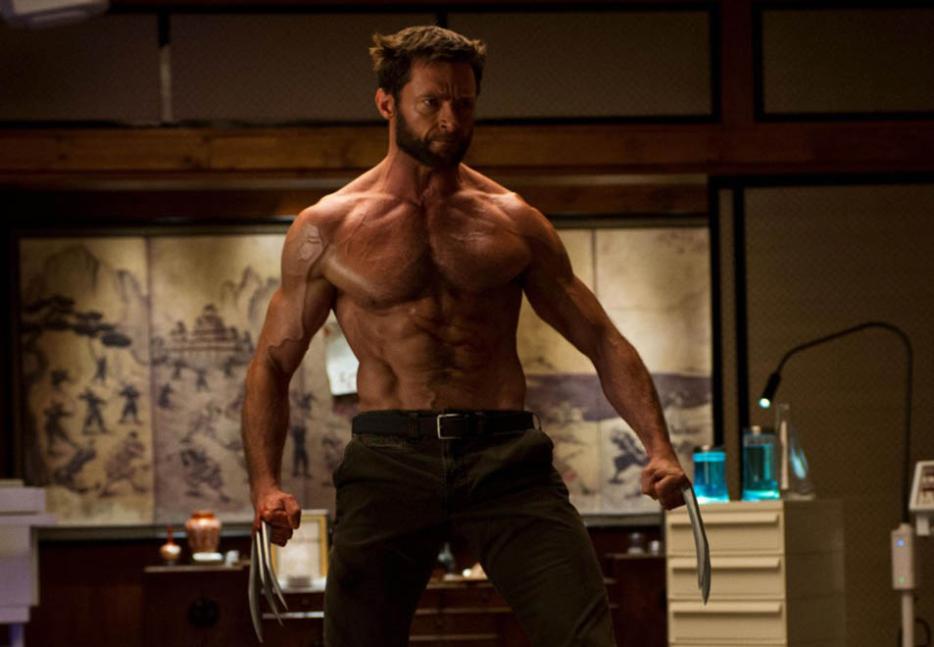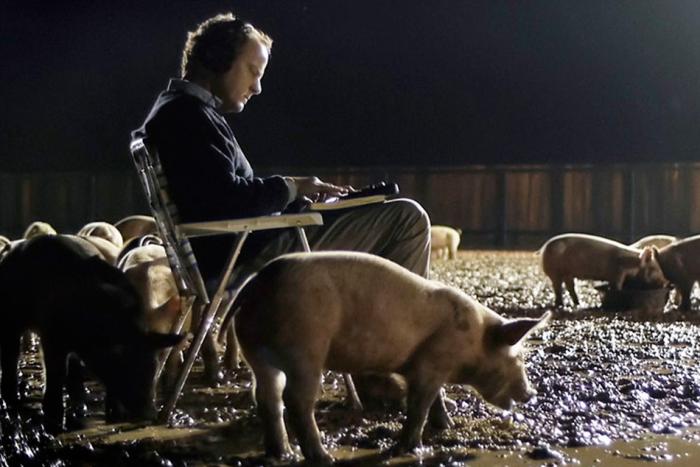Among 2013’s highest-grossing films are the stories of a wisecracking, armour-wearing billionaire (Iron Man 3, #1), a clean-cut alien in tights (Man of Steel, #4), a beefcake Norse god (Thor: The Dark World, #11), and an ex-lumberjack with claws (The Wolverine, #20). Comics have been good to the movie industry, but the comics industry itself has long been in a worrisome state. Can the films swoop in and save their aging ancestors from certain death?
Just as in any long-running comic, where storylines come and go, universes diverge, and characters die and come back to life, there isn’t one clear answer. Comic-store owners across the country have differing points of view, but they do seem to agree on one thing: the near-worthlessness of the movie tie-in. “They are almost always awful,” says Peter Birkemoe, owner of Toronto store The Beguiling. For Peter Dixon, who owns Paradise Comics in north Toronto, comics with photos of actors on the cover, created to tell the story of a movie that was itself inspired by comics, “are a waste. … I don’t know whether they’re trying to rush them out, but none of them have really done too well.” Lee Jordan, owner of Komico in Montreal, offers, “I’ve been collecting comics since 1974-75, and the rule of thumb back then was, never waste your money on a movie adaptation.”
If they were entirely worthless, though, publishers wouldn’t bother. Birkemoe notes that the adaptation of Spider-Man2 from 2004, padded out with the original version of the story from 1967, plus another from the 1990s, makes “a perfect Grade 9 comp-lit package for someone who sells a lot to school markets. All sorts of really easy study-guide-type questions spring out of this book, which otherwise is just a mediocre comic.”
“I hate to say it, but after waiting so long for really good superhero movies—all my life, almost—and now they’re here, I’m almost getting bored of them. There are so many now. And they’re always basically the same story, which is not much story: bad guy versus good guy, good guy wins in the end.”
The fact that comics—and not just “literary” graphic novels, but superhero serials—are being taught in schools cements them as no longer the refuge of the awkward adolescent. Pat Shaughnessy, who has owned Vancouver’s Golden Age Comics since 1974, says comics are “very mainstream now. If you go back to when I started, you were considered a little bit backward if you were still reading comics in grade school.” And certainly the movie tie-in is a populist form of entertainment—as Jordan admits, “They may sell like crazy in Chapters.”
But diehard comics fans, who are vital to the art form’s survival and pick up new issues of their favourite series every Wednesday, often have a vexed relationship with the films. Jordan and his friends have a theory: at every movie studio, “There’s this guy who’s a big comic book fan, and once they’re ready to start filming, they ask him: ‘Can you throw something into this movie that’s really going to piss off regular comic book readers?’ ‘Oh, OK—sure. Instead of web shooters, let’s have the webs come out of Spiderman’s hands.’ For comic readers, this is an excruciating detail. It’s an agonizing affront.”
He has a litany of examples: the fact that Deadpool, known as “The Merc with the Mouth” in comics, doesn’t talk in X-Men Origins: Wolverine; the transformation of Galactus in Fantastic Four: Rise of the Silver Surfer from a planet-eating giant to a cloud; the significant shrinking of Bane in The Dark Knight Rises …
On the flip side are the Frank Miller-overseen adaptations of his own comics, 300 and Sin City, both of which have movie sequels due in 2014. Comics perhaps lend themselves better to straightforward adaptation than prose fiction—especially in an era when special effects make their style and visual flourishes easier to replicate. Sin City is Jordan’s favourite comic-based film: “It’s exactly like the comic book,” he says, in the story and the look, down to recreations of the comic’s panels themselves.
Miller’s films are co-produced by Mike Richardson, who founded Dark Horse Comics in Oregon in 1986 as an alternative to Marvel and DC. In the early ‘90s, he started a film division so he and his characters’ creators could maintain control of their properties; The Mask and Time Cop were early hits both in the cinema and at the bookstore. “The two major houses are now owned by two big corporations that have a board of directors to satisfy,” he says. “I am my board of directors. We take a lot of chances.” Occasionally they’ll misfire: the 2013 film of the series R.I.P.D., he admits, “didn’t fare that well at the box office, so the increase [in comics sales] was muted.” But store owners tend to agree about the positive effect of the film Sin City, for instance, on sales of the series—it helps when the movie is successful and, of course, when the comic itself is good.
And when it’s not? Man of Steel, for instance, topped the box office in a single bound, but consensus among comic-store owners is that his Superman comics sales saw nary a blip. “He’s such a boring character,” sighs Jordan. As for the Iron Man franchise, according to Birkemoe, “There are no good Iron Man comics really to hand someone, to say, ‘This is the definitive work,’ or, ‘This is really going to excite you the way the movie does.’” Especially before the film came out, he says, there was “a sea of mediocrity.”
Dixon agrees: “I can’t just give you garbage to read and you’ll continue reading it; you’ve gotta actually enjoy the storyline.” However, he says, more recent Iron Man issues penned by Matt Fraction have been closer to being something the hero’s genius alter-ego, Tony Stark, might actually read.
That said, comic books aren’t always sold to be read, and films encourage collectors too, driving up speculation on issues whose stories or characters have been mined for the silver screen. As soon as the main villain in The Dark Knight Rises was announced,says Dixon, “We sold three [copies] of our first appearance of Bane off our website that night. If we’d known, we probably would have bumped them an extra 50 percent.” Stores such as Paradise, which specialize in back issues, are helped greatly when readers become collectors: “They start spending 15, 20, or 100 dollars or $1,000 on a book. They’ll try to complete the run of Spider-Man because they saw the movie.”
Some comics evolve symbiotic relationships with film and TV. Instead of creating a spin-off movie when Buffy the Vampire Slayer went off the air, for instance, series creator Joss Whedon launched a canonical “eighth series” as a set of comic books in 2007. “We had probably about 100 or 200 women who probably had never set foot in a comic store come in and buy that book,” says Dixon, “and since, half of them have stayed.” Dark Horse, which early on created comics developing the stories of the Alien and Predator films, is planning a series based on Ridley Scott’s bewildering Alien sort-of-prequel, Prometheus. There are “a lot of puzzles” emerging from the film, says Richardson. “We’re going to try and answer some of them.”
For all of Dark Horse’s success with comics and movies such as Sin City and Hellboy, the publisher plans to resurrect some old superheroes in 2014 as well: Captain Midnight (first drawn in 1938), Ghost, and X (both from 1993). Adaptations may be on the horizon, but Richardson doesn’t want to get ahead of himself. “We try to make great comics,” he says, “knowing that some of them may transfer well into films, and I’m not sure that creating comics in order to make films is a very good model. There aren’t enough films made each year for many companies with many properties to be getting those films made.” Nonetheless, according to Birkemoe, “You will find many comics that are little more than pitch packages for films, that someone hopes, ‘Hey, I’ve got this idea about chicks on motorcycles fighting zombies. I can just have someone draw that comic, throw it out there, and hopefully I’ll get a movie made.’”
Such cynicism could be short-lived, especially if the ongoing comic book movie boom should scale down from a KAPOW! to a muffled thud. “I don’t think people will ever lose interest in comics,” says Shaughnessy, “but there’s not much doubt in my mind that at some point superhero movies are not going to be as popular as they are now, and there’ll probably be an impact on what publishers put out.”
Perhaps, in the end, the important thing for comics will be to demonstrate the range of their stories. “I hate to say it,” says Jordan, “but after waiting so long for really good superhero movies—all my life, almost—and now they’re here, I’m almost getting bored of them. There are so many now. And they’re always basically the same story, which is not much story: bad guy versus good guy, good guy wins in the end.”
The next wave of comics publishing might see comics bundled digitally along with movie downloads, so you can both watch one and read the other, say, on a tablet. Dark Horse has discussed this; as Richardson says, “While it’s sacred these days to many fans who really don’t understand its origin, the original comic books were basically the cheapest way to reprint the popular Sunday funnies of the day. … We spend a lot of money trying to duplicate that old very cheap process. Digital solves the issue of all of the waste in traditional comics distribution. Early last year, at the same time digital seemed to gain traction, comic sales reversed that downward trend.” What’s more, “the iPad makes glorious work of comic books. They look tremendous on that screen.”
Could this be the end of the bricks-and-mortar comic store?
Stay tuned for the exciting sequel!





